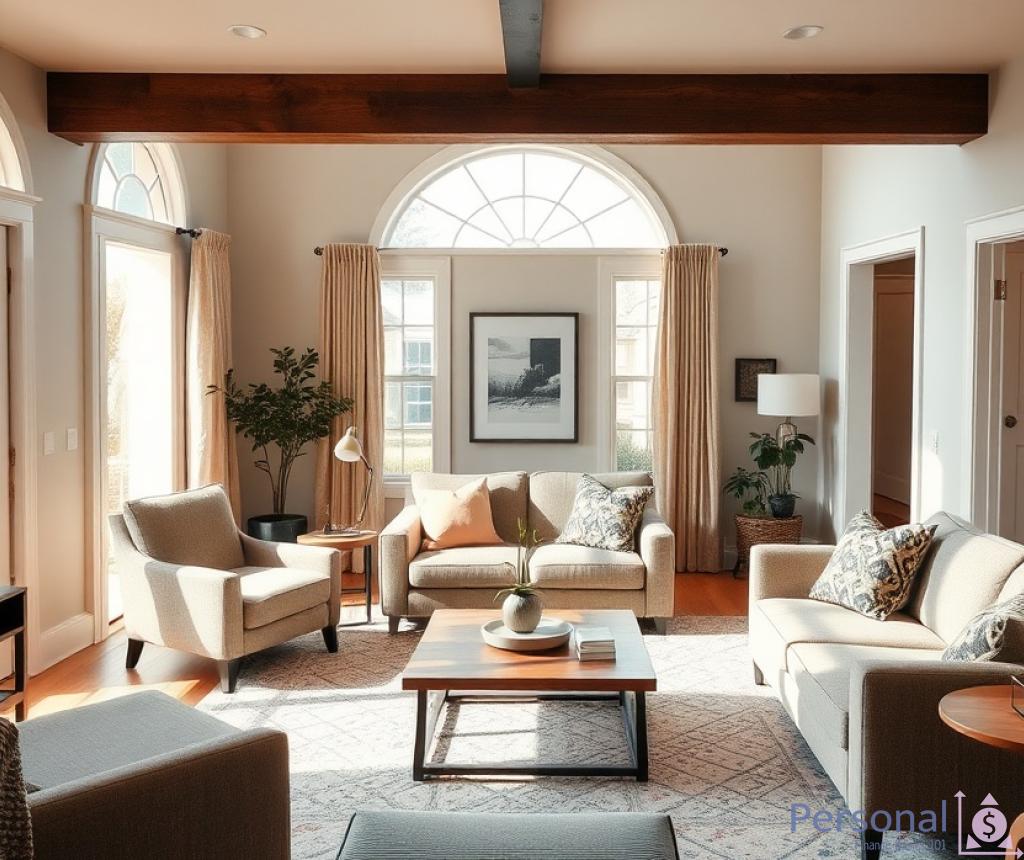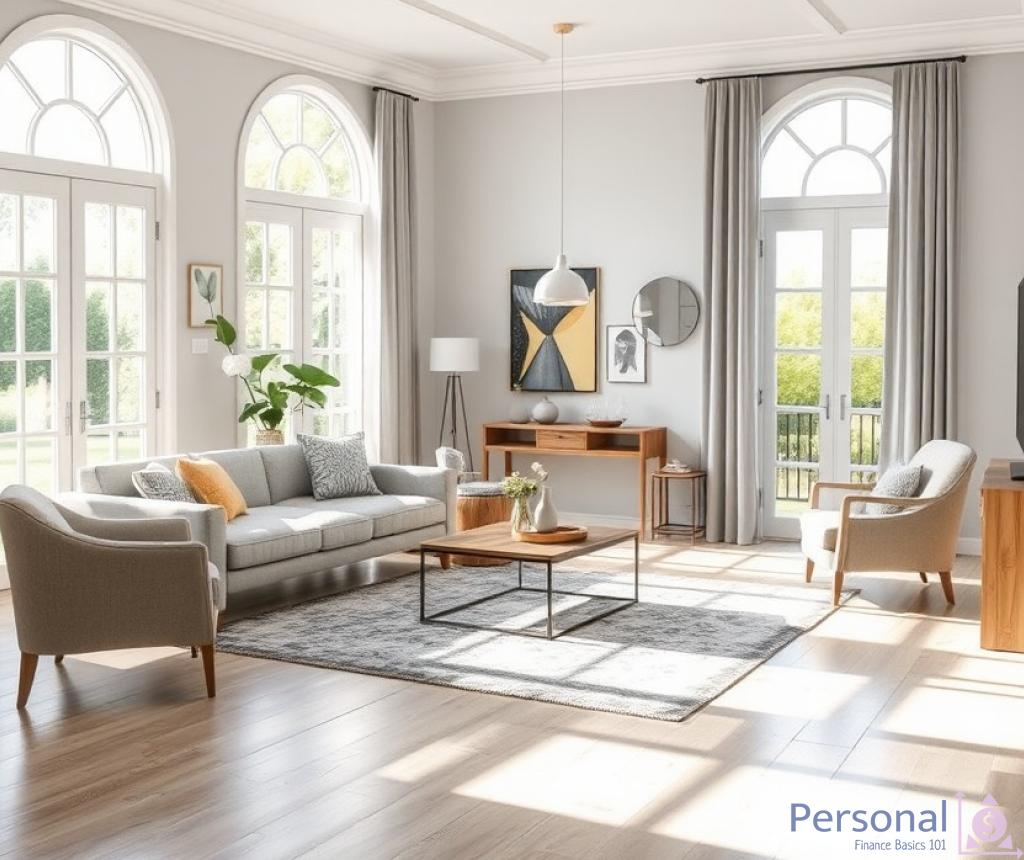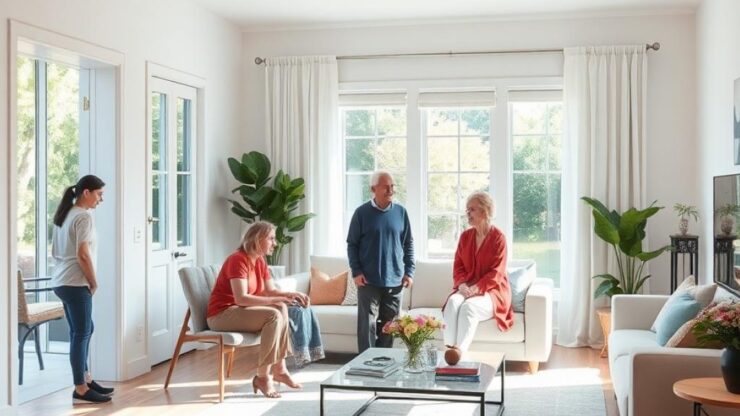Principles of Universal Design

In our rapidly evolving society, the need for inclusivity has never been more paramount. Universal Design is not just a concept; it is a philosophy that encourages the creation of environments that accommodate everyone, regardless of age, ability, or circumstance. By implementing its principles, we can transform our living spaces into welcoming havens that promote independence and dignity.
Understanding the core principles of Universal Design is essential for architects, designers, and homeowners alike. These principles serve as guidelines that ensure accessibility and usability for all. Below is a comprehensive overview of these guiding tenets:
- Equitable Use: The design should be useful and marketable to people with diverse abilities.
- Flexibility in Use: The design accommodates a wide range of individual preferences and abilities.
- Simplified and Intuitive Use: Use of the design should be easy to understand, regardless of the user’s experience, knowledge, language skills, or current concentration level.
- Perceptible Information: The design should communicate necessary information effectively to the user, regardless of ambient conditions or the user’s sensory abilities.
- Tolerance for Error: The design minimizes hazards and the adverse consequences of accidental or unintended actions.
- Low Physical Effort: The design can be used efficiently and comfortably with a minimum of fatigue.
- Size and Space for Approach and Use: Appropriate size and space is provided for approach, reach, manipulation, and use regardless of the user’s body size, posture, or mobility.
Integrating the principles of Universal Design into home environments requires thoughtful planning and execution. It is crucial to consider both functionality and aesthetics. The following table illustrates how these principles can be applied practically in residential settings:
| Universal Design Principle | Practical Application |
|---|---|
| Equitable Use | Installing lever-style door handles that are easy to use for everyone. |
| Flexibility in Use | Incorporating adjustable height countertops in kitchens. |
| Simplified and Intuitive Use | Using clear signage and color-coded systems for navigation. |
| Perceptible Information | Employing tactile indicators on stairs and pathways. |
| Tolerance for Error | Designing rounded edges on furniture to prevent injury. |
| Low Physical Effort | Implementing motion-sensor lighting in hallways. |
| Size and Space for Approach and Use | Ensuring doorways are wide enough for wheelchair access. |
By embracing the principles of Universal Design, we not only enhance the usability of our homes but also foster a more inclusive community where everyone has the opportunity to thrive. It’s time to rethink our environments and prioritize accessibility for all.
Key Features for Accessibility

The concept of Universal Design extends beyond mere compliance with regulations; it embodies a commitment to creating spaces that are genuinely welcoming and usable for everyone. As we delve into the key features that underpin accessibility, it becomes clear that these elements not only enhance the quality of life for individuals with disabilities but also benefit the broader community. By understanding and implementing these features, we can create environments that are not only functional but also inspire a sense of belonging.
One of the cornerstones of an accessible home is the ability to move freely and safely throughout the space. This can be achieved through thoughtful design that prioritizes open layouts, wide corridors, and minimal obstacles. For instance, ensuring that hallways are spacious enough to accommodate mobility devices is essential. Beyond just width, the selection of flooring materials plays a critical role. Non-slip surfaces reduce the risk of falls, while smooth transitions between different flooring types prevent tripping hazards.
Creating an accessible home also involves integrating features that facilitate daily activities. For example, incorporating lever-style faucets and pull-out shelves in kitchens allows individuals of varying abilities to engage in cooking and meal preparation without assistance. Bathrooms, often the most challenging spaces for accessibility, can be transformed with the installation of grab bars, walk-in showers, and adjustable vanities. Such adaptations not only promote independence but also encourage a sense of dignity in performing personal tasks.
Moreover, technology plays a pivotal role in enhancing accessibility. Smart home systems can be tailored to meet the unique needs of residents, providing voice-activated controls for lighting, heating, and security. This innovation not only simplifies everyday tasks but also empowers individuals to manage their environments with ease. By prioritizing these key features, we can forge a path towards a future where homes are not just structures, but inclusive spaces that celebrate diversity and promote the well-being of all.
Benefits of Inclusive Housing
As our society evolves, the recognition of inclusive housing as a fundamental necessity grows stronger. The benefits of designing homes that cater to individuals of all ages and abilities extend beyond mere compliance; they promote a holistic and equitable living environment that enhances the quality of life for everyone. Embracing Universal Design principles not only addresses the immediate needs of those with disabilities but also enriches the living experience for all residents.
Inclusive housing fosters a sense of belonging that transcends physical limitations. When homes accommodate diverse needs, they enable individuals to engage fully in daily activities and community life. Families can interact without barriers, and individuals can maintain their independence for longer periods. This mutual benefit creates a supportive atmosphere, reinforcing the notion that everyone deserves a comfortable and functional living space.
Investing in Universal Design features can yield significant economic benefits for homeowners and communities alike. By integrating accessible design from the outset, homeowners can increase the resale value of their properties and attract a broader market. Furthermore, inclusive housing reduces the need for costly retrofitting as individuals age or experience changes in ability. This proactive approach not only saves money but also ensures that communities are prepared for future demographic shifts.
Inclusive housing cultivates stronger community bonds by promoting social interactions among residents of varying abilities. When individuals feel welcome in their living spaces, they are more likely to engage with their neighbors, participate in local events, and contribute to community initiatives. This social integration enhances overall community well-being, fostering an environment where diversity is celebrated and everyone has a stake in the collective success.
Key Benefits of Inclusive Housing:
- Increased accessibility: Facilitates ease of movement for all residents, enhancing daily living.
- Independence: Empowers individuals to perform tasks without reliance on others, promoting dignity.
- Resale value: Properties with Universal Design features are often more attractive to potential buyers.
- Community engagement: Encourages social interactions, enriching community ties.
- Future-proofing: Homes designed inclusively can adapt to changing needs over time.
Designing for Diverse Needs
In an era where inclusivity is paramount, the design of our living spaces must evolve to meet the diverse needs of all individuals. Whether it’s a young child, an elderly person, or someone with a physical disability, every aspect of home design should be thoughtfully considered to foster an environment of accessibility and comfort. By embracing a holistic approach to design, we can create homes that are not only functional but also inviting to everyone.
Each individual has unique requirements that influence how they interact with their surroundings. Recognizing these varying needs is essential in the design process. For instance, children require spaces that allow for safe exploration and play, while older adults may need features that enhance mobility and independence. By understanding the demographic diversity of users, designers can tailor environments that cater to all.
To accommodate a spectrum of needs, integrating adaptable features into home design is crucial. These features allow for flexibility and personalization, ensuring that spaces can evolve alongside the changing requirements of their inhabitants. Below is a list of adaptable features that can enhance accessibility within homes:
- Adjustable Furniture: Pieces that can be modified in height or configuration, such as desks and tables, can serve multiple age groups and abilities.
- Smart Technology: Voice-activated systems and smart home devices can assist in managing tasks with ease, providing convenience for all users.
- Multi-level Accessibility: Incorporating ramps and elevators enables seamless movement between different levels of the home, removing barriers for those with mobility challenges.
By incorporating such adaptable features, homes can become more accommodating and user-friendly, providing everyone with a sense of belonging.
Collaboration among architects, designers, and occupational therapists is vital in the pursuit of creating universally accessible homes. By leveraging the expertise of professionals from various fields, we can ensure that designs not only meet aesthetic standards but also prioritize inclusivity. Engaging with the community through feedback and involvement can further enhance the design process, allowing for a more comprehensive understanding of the needs and preferences of future residents.
Case Studies in Universal Design
The implementation of Universal Design principles has been transformative in various residential projects across the globe. These case studies exemplify how innovative design can create environments that cater to a multitude of needs, fostering inclusivity and enhancing the quality of life for all residents. By examining these successful examples, we can glean insights into best practices and strategies that can be replicated in future designs.
One remarkable case study is the Adaptive House in the United States, designed specifically for a family with a member who uses a wheelchair. This project seamlessly integrates Universal Design features while maintaining aesthetic appeal. The home includes wide doorways, zero-step entries, and open floor plans that allow for easy navigation. Beyond the physical adaptations, the design emphasizes natural lighting and outdoor accessibility, creating a harmonious living environment.
Another inspiring example comes from Australia, where a multi-generational home was developed to accommodate the elderly parents and young children of the family. This residence highlights the importance of flexibility in design. It incorporates adjustable furniture, such as dining tables and chairs that can be modified for various heights, ensuring that everyone—from toddlers to seniors—can comfortably enjoy meals together. The home also features smart technology that enables voice-activated controls, making daily tasks easier for elderly residents.
Examining these case studies reveals several key lessons that can guide future Universal Design projects:
- Inclusivity is Paramount: Each design should prioritize the needs of all potential users, ensuring that spaces are usable for individuals of diverse abilities.
- Flexibility is Essential: Incorporating adaptable elements allows homes to evolve alongside their inhabitants, accommodating changes in mobility and lifestyle.
- Community Feedback is Valuable: Engaging future residents in the design process leads to more effective solutions that truly meet user needs.
These case studies not only showcase the benefits of Universal Design but also serve as a call to action for architects and designers to embrace these principles in their projects. By learning from successful implementations, we can work toward creating homes that truly reflect the diverse needs of our society, paving the way for a more inclusive future.
Disclaimer
This article has been created or edited with the support of artificial intelligence and is for informational purposes only. The information provided should not be considered investment advice. Please seek the support of a professional advisor before making any investment decisions.






